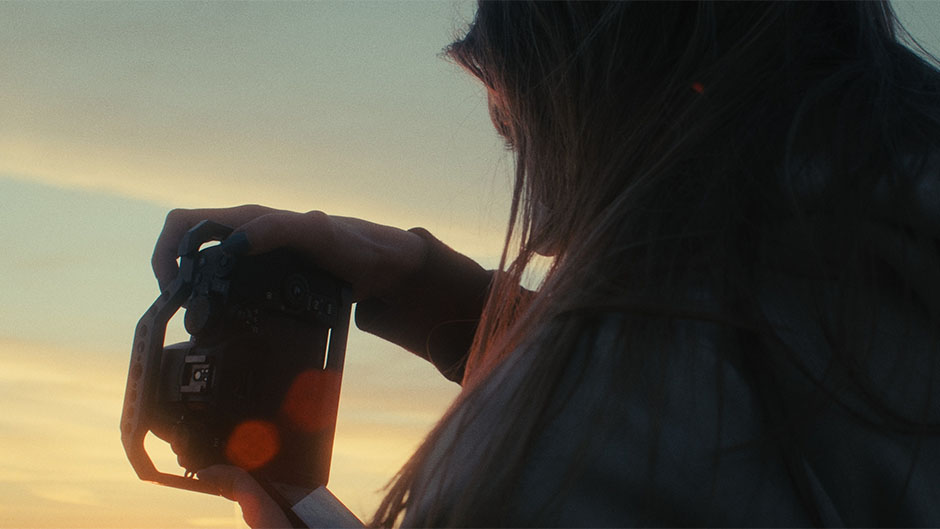Directors, filmmakers and videographers use a director’s treatment to present their ideas for commercials, music videos, tv shows or movies.
Its purpose is to showcase your vision for the film. You must convince the hiring team that you are the best candidate for the job by explaining the choices you will make and the reasoning behind them. This will provide a basis for why they should select you over other candidates.
What is a static or an interactive director’s treatment?
A director’s treatment can come via mail as a static pdf. Or as a simple link that opens a cloud-based presentation in the browser. If you want to include video clips in a pdf you can only create hyperlinks, while with an interactive presentation, you have the chance to include automatically playing GIFs and/or clips.
The latter one becomes more and more popular because it grabs the viewer’s attention and brings life into the treatment. But for the most part, it can simply show hard-to-explain effects to the non-creative reader without them getting sidetracked by Vimeo or Youtube recommendations when opening a link in a browser. While a pdf will never go out of style, just because of its simplicity, small size and easy accessibility. So it really depends on your personal preferences which format to use.
What is the goal of a director’s treatment?
Obviously to win the job by explaining and showing the director’s unique take on a concept using text and carefully selected images.
But when you’ve got the job, it also serves as a binding contract. So be careful to not over-promise what’s possible with the money and time available. It’s best to under-promise and over-perform. Usually, the experienced producer will have an eye on that but it is your responsibility too, so be considerate.
Furthermore, it will be the most important document moving forward in production. Guiding the crew. If you already included the different departments and their goals you have already done most of the crew briefing as well.
What to focus on when writing a director’s treatment?
I don’t want to repeat here what some have already brilliantly written about. But point out the one thought that makes the greatest difference while writing the director’s treatment.
The artist in you might shrink back from the following paragraph, but if you want to earn some money it is one of the most valuable tips I’ve ever got.
More often than not the pitching process is about money and “politics” rather than art. So…
…start thinking about the people who are going to read the treatment (the decision-makers). Do they have objections you know about? What are the problems they need to solve for the brand or company?
I know coming up with an ingenious idea and presenting it in a clear and captivating manner is already an overwhelmingly hard thing to do, especially if you are just starting out as a director. But start making it a habit to ask clients about the goals they want to reach and obstacles they have to overcome. And try to address them in your pitch, and come up with creative solutions to ease their minds. You will make their lives easier and they will love you for that… and don’t forget they are the ones to hire you.



What is the difference between director’s treatments for commercials, movies and television?
You will find articles that explain to you all the formal and informal differences between those treatments. But understand that those are shifting and changing all the time. And in the past few years, treatments for all of these different formats are generally moving more and more towards the look and style of commercial treatments as we know them.
Because of what they all have in common, despite their difference in length and structure, is that those presentations need to be clear and concise and assure those who read them that they are investing their time, and money well. And trust their sanity for the lifespan of their next project in the hands of a great and competent director who knows what she is doing.
While emotionally captivating them with their take on the story.
So if you are thinking about pitching your feature-length script idea to possible investors or production houses use some well-selected moods to underline the words and make it easier for everyone to understand your vision. Even if it’s just one great mood image, it will help set the mood and get your reader excited.
Why creating a shorter treatment is always better, but also harder.
Time is the most valuable source someone could gift you with. And the worst thing would be to give them the feeling of wasting it. Don’t over-explain in lengthy sentences or repeat yourself. Don’t use hollow words, just because everyone seems to use them (eg.: I want to create an authentic piece…). I know the commercial world is full of it, but don’t participate, there is no worth in it. So make every word count to keep it short and sweet.
Our attention span is short and sometimes seeing too much text on one page makes us sigh and loos interest immediately. I am pretty sure you know what I mean, so look at the slides of your presentation the same way you would look at a meme or post on social media.
I hope you found this article helpful.
Good luck with your pitch.


